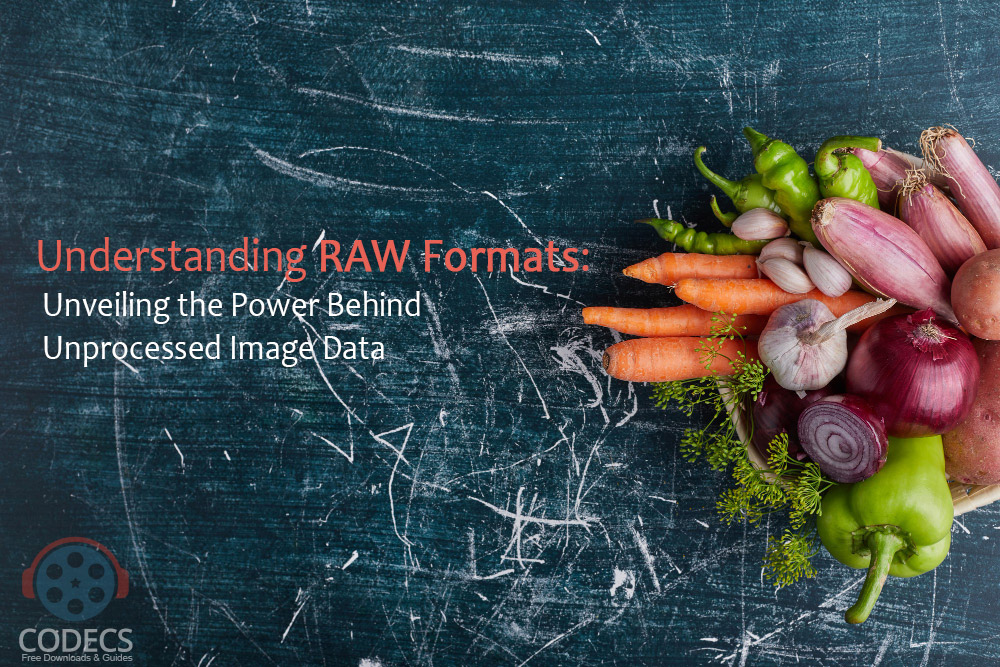Understanding RAW Formats
RAW files offer unparalleled flexibility and creative control, allowing photographers to capture and preserve the unprocessed, raw data directly from their camera sensors.
Image by azerbaijan_stockers
In this article, we explore the world of RAW formats, examining their advantages, popular variants, and the tools available to handle them.
What is a RAW Format?
A RAW file is an image format that contains unprocessed and uncompressed data directly captured by a digital camera's image sensor.
Unlike other formats like JPEG or PNG, which undergo in-camera processing and compression, RAW files preserve the original data captured by each photosite (pixel) on the sensor.
This results in a significantly larger file size but offers immense advantages in terms of post-processing flexibility.
What are the advantages of using RAW formats?
Greater Image Quality:
RAW files retain the maximum amount of information captured by the camera sensor, including color data, dynamic range, and fine details. This allows photographers to have more control over the final image during post-processing, reducing the risk of losing vital information.
Expanded Dynamic Range:
RAW files have a wider dynamic range, meaning they can capture more details in both shadows and highlights. This allows photographers to recover blown-out highlights or bring out details from underexposed areas, providing greater latitude for correcting exposure-related issues.
Non-destructive Editing:
RAW files offer non-destructive editing capabilities, allowing photographers to make extensive adjustments to various aspects of the image without compromising the original data. This flexibility is particularly valuable for tasks such as white balance adjustments, exposure compensation, and color grading.
White Balance Control:
RAW files enable precise control over white balance adjustments. Since white balance is typically set in-camera for JPEG images, RAW files allow photographers to experiment and fine-tune white balance settings during post-processing, ensuring accurate color reproduction.
Lossless Compression:
While RAW files have larger sizes compared to compressed formats like JPEG, they often employ lossless compression algorithms. This means that the data is compressed without any loss of image quality, preserving every detail captured by the sensor.
Which RAW formats are commonly used and popular?
There are several proprietary and open RAW formats in use today, each associated with specific camera manufacturers.
Some of the most widely used RAW formats include:
Canon CR2/CR3
Canon's RAW formats are used by their range of digital cameras. CR2 is the older format, while CR3 is the newer version introduced in recent camera models. These formats retain extensive metadata and offer flexibility for post-processing.
Nikon NEF
Nikon's RAW format, known as NEF (Nikon Electronic Format), is used by their DSLR and mirrorless cameras. NEF files contain a wealth of information and allow for fine adjustments during editing.
Sony ARW
Sony's RAW format, ARW (Alpha RAW), is used by their Alpha series of cameras. ARW files preserve a wide dynamic range and offer flexible post-processing options.
Adobe DNG
Adobe Digital Negative (DNG) is an open standard RAW format developed by Adobe. It aims to provide a universal RAW format that can be used across different camera brands.
DNG files contain the original raw data and can be read by a wide range of software applications.
DNG, the sole raw image format actively seeking industry-wide adoption, is commonly employed by makers of "niche" cameras facing support challenges from software companies.
Some Tools for Working with RAW Formats
To work with RAW files effectively, photographers can utilize various software tools.
Here are a few popular options:
Adobe Photoshop is a professional-grade image editing software that supports RAW file processing. Its Camera Raw module allows photographers to make extensive adjustments to RAW files with precision and control.
Adobe Lightroom is a comprehensive photography software that offers powerful RAW editing capabilities. Lightroom streamlines the workflow from importing and organizing RAW files to advanced editing and exporting.
Capture One is a professional RAW converter and image editing software that provides excellent support for various camera RAW formats. It offers robust editing tools and a highly customizable workflow.
RawTherapee is a free and open-source RAW processing software that provides advanced editing capabilities. It supports a wide range of RAW formats and offers an intuitive interface for photographers.
darktable is a free and open-source RAW image editor and manager that's a viable alternative to previously mentioned Lightroom.
FastStone Image Viewer is a versatile software for viewing and organizing images, including RAW files, offering intuitive navigation and basic editing features.
RAW formats empower photographers with the ability to capture and preserve unprocessed image data directly from their camera sensors.
With greater image quality, expanded dynamic range, non-destructive editing, and precise control over various parameters, RAW files open up a world of possibilities for post-processing and creative expression.
By using dedicated software tools, photographers can unlock the full potential of RAW formats and transform their images into stunning works of art. So, embrace the power of RAW formats, and let your creativity soar!
Check also this video: RAW vs JPEG - Why it MATTERS!













